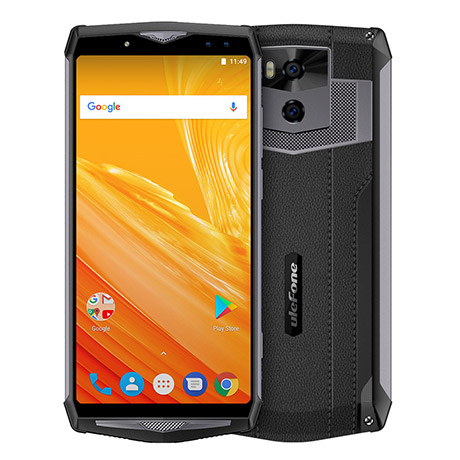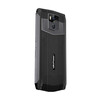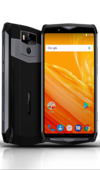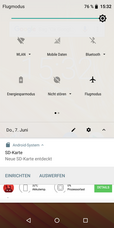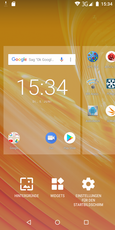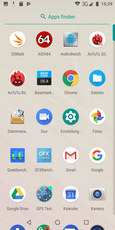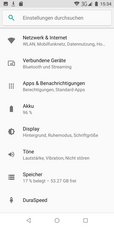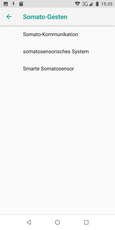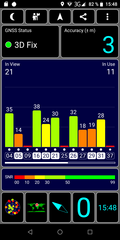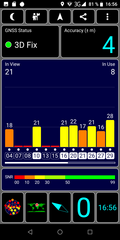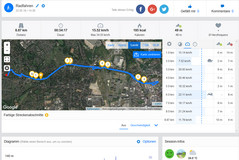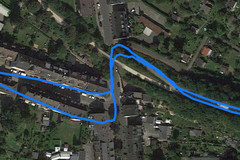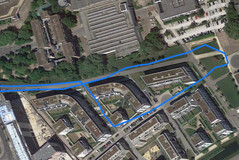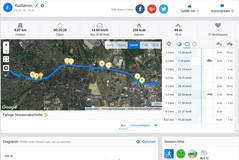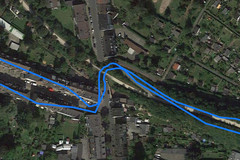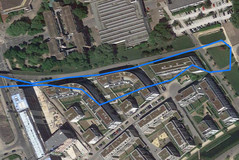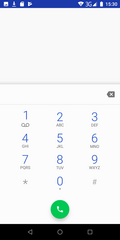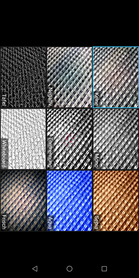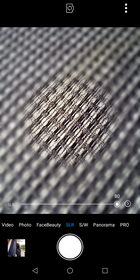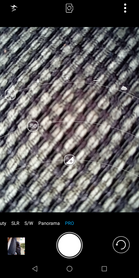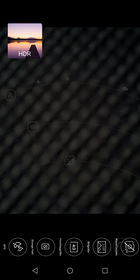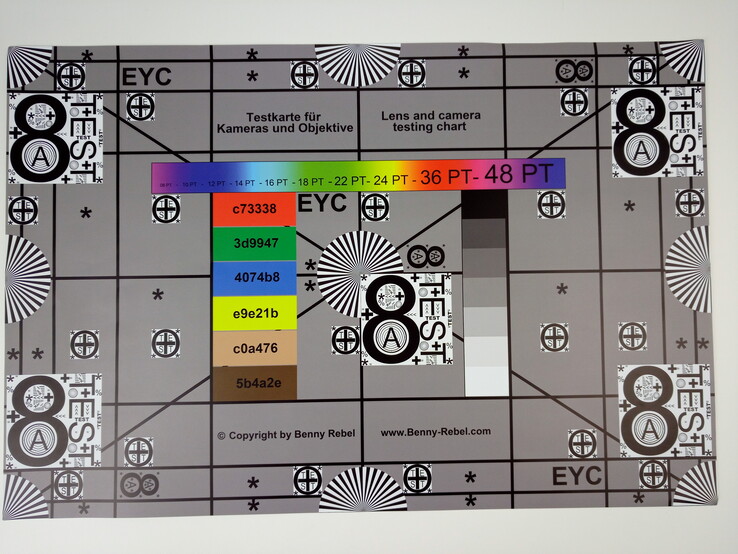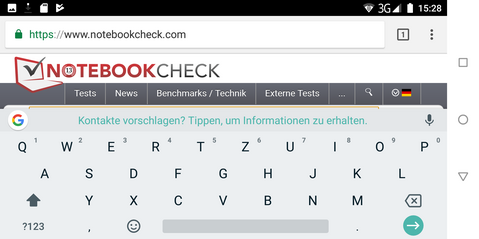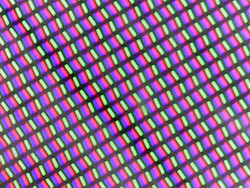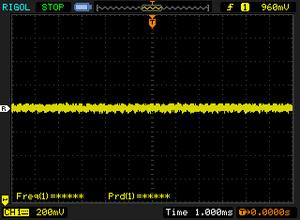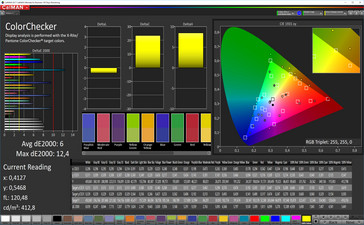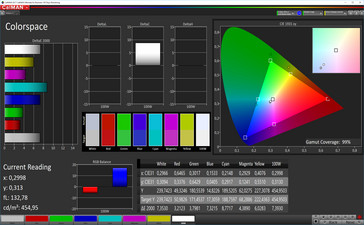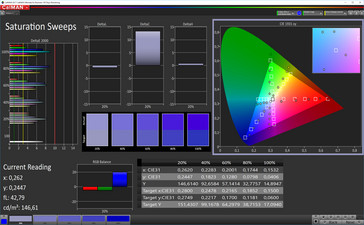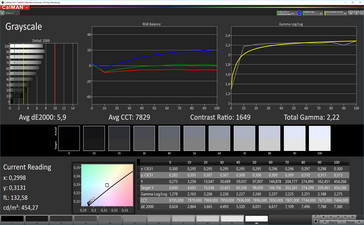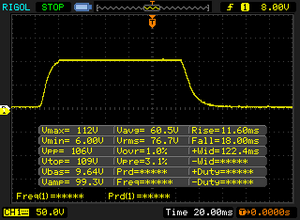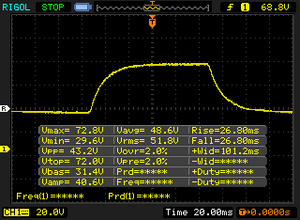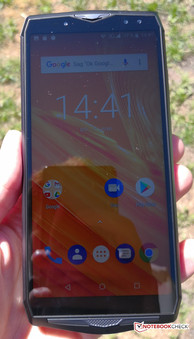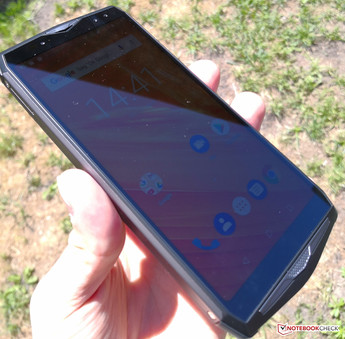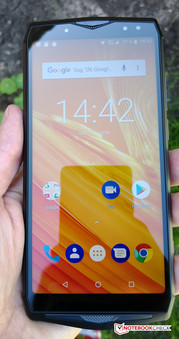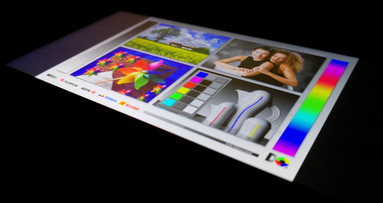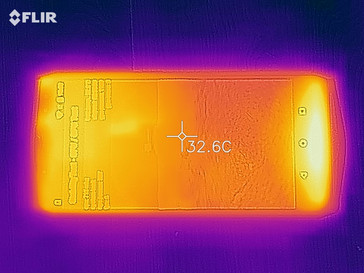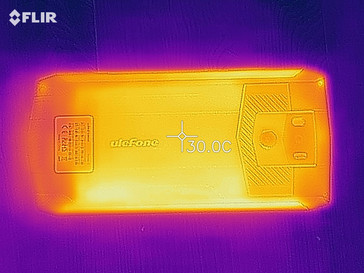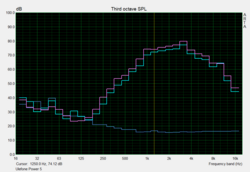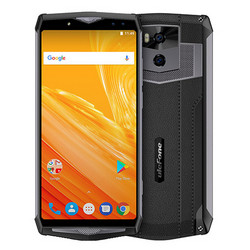UleFone Power 5 Smartphone Review
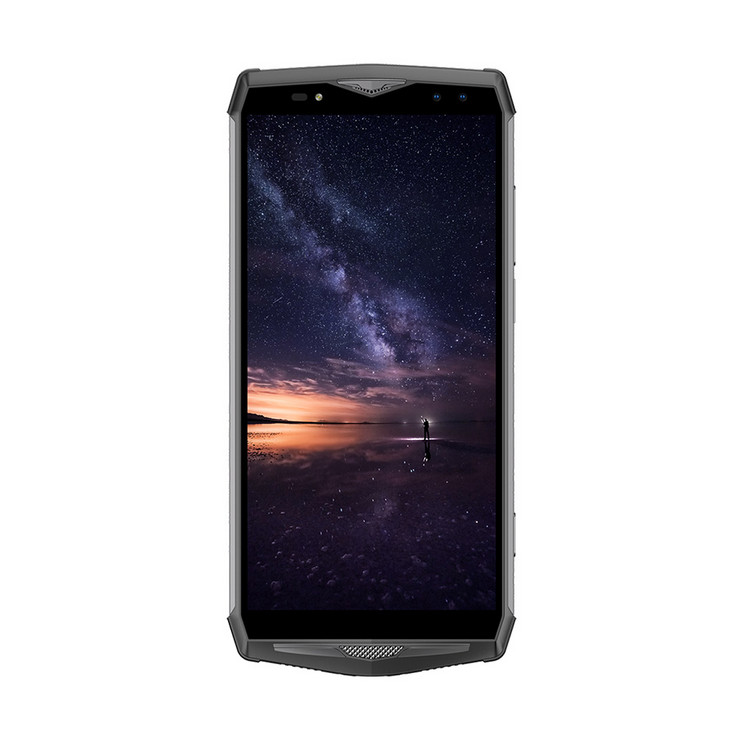
The Power 5 is UleFone’s new flagship model that sits squarely in the mid-range of smartphones, being available for about 220 Euros (~$255) from import companies. Find out in this review what you should know when importing a device from Asia.
The Power 5 and the Blackview P10000 Pro differ minimally aesthetically. Both mid-range devices feature a 6.0-inch FHD display with a 2:1 aspect ratio and the same octo-core MediaTek SoC. The Power 5 pulls ahead of its rival in terms of RAM though, with UleFone equipping the Power 5 with 6 GB of RAM compared to the P10000 Pro’s 4 GB. Moreover, the Power 5 has dual rear and front-facing cameras and wireless charging. Finally, the Power 5 runs on Android Oreo 8.1, which is currently the latest version of Android.
We will be comparing the Power 5 not only to the P10000 Pro but also with the Oukitel K10, the UleFone Power 3, the Sony Xperia L2, the Huawei P Smart and the HTC Desire 12.
Case
The Power 5 is only available in black. The device measures 169 x 80 x 16 mm and weighs 330 g. This makes the Power 5 feel particularly bulky in the hand, with the 16 mm thickness significantly affecting the device’s ergonomics. The 6.0-inch display is flush with the case and is surrounded by wide bezels that result in a 69% screen-to-body ratio.
The workmanship and case stability are impressive though. The Power 5 has a plastic back case with a leather finish that both lacks the quality of other current mid-range smartphones and feels generally cheap. The power button and volume rocker are on the right-hand side of the device along with the fingerprint sensor. The physical buttons have well-defined pressure points, but they feel somewhat wobbly to the touch.
Connectivity
The Power 5 is equipped with a MediaTek Helio P23 MT6763T SoC and 6 GB RAM. Additionally, there is a status LED, a fingerprint sensor, Wi-Fi calling, and an FM radio. There is also Miracast support, which worked well wirelessly transmitting content to our Sony Android TV. The Power 5 has a USB 2.0 Type-C support that supports USB OTG for connecting external peripherals to the device.
The Power 5 has 64 GB of eMMC internal storage, which should be enough for most people. It is worth noting that 45 GB of this is available for user apps and data, while the rest is reserved for the OS and preinstalled apps. The internal storage can be expanded by up to a 256 GB microSD card. The microSD card can be formatted as internal memory, which allows apps and app data to be stored on the microSD card and the internal storage.
Software
The Power 5 ships with Android Oreo 8.1, with our test device equipped with April 1, 2018, Android security patch level at the time of testing.
The UI is practically stock Android with UleFone making hardly any visual changes from what we have seen running on the Google Pixel 2. Additionally, the Power 5 ships with little bloatware too, with UleFone installing only a handful of additional apps.
There are some additional software functions too, such as gesture control. This can be found in Settings, but it only seems to be set to English. The gesture control menu stayed in English despite setting our test device’s system language to German.
Communication & GPS
The Power 5 supports Bluetooth 4.1, but there is an NFC chip. The device has dual-SIM support, but the card tray only accepts either two nano-SIMs or a nano-SIM and a microSD card. The Power 5 uses LTE Cat. 6 for mobile data connection and theoretically supports up to 300 Mb/s download speeds and up to 50 Mb/s upload speeds. The Power 5 supports all relevant frequency bands in Germany.
The Power 5 supports IEEE 802.11 a/b/g/n standards, which means that the device can connect to both 2.4 GHz and 5 GHz Wi-Fi networks. We measured a -50 dBm signal strength with our test device close to a Telekom Speedport W921V router.
The Power 5 is well below average in terms of Wi-Fi performance. Our test device achieved below 100 Mb/s in both receiving and transmission iperf3 Client tests, which is noticeably slower than the Blackview P10000 Pro and outstandingly slow compared to the HTC U12 Plus. The U12 Plus is the outlier here though as the Power 5 finished in the middle of our comparison devices in our Wi-Fi tests.
The Power 5 uses GPS and GLONASS to provide location services. Our test device located itself promptly outdoors and to an accuracy of three meters. The Power 5 maintains a stable location indoors too, albeit at a marginally less accurate four meters.
We took the Power 5 on a bike ride to test its location accuracy against a professional navigation device, the Garmin Edge 500. Our test device performed well, recording our course accurately and only deviating by less than 10 meters over an 8.87-km ride. We did notice small deviations in the route when looking at the results in detail, but this is only a minor concern. Overall, we cannot fault the Power 5’s navigational capabilities given its price, and it should be suitable for all general navigation tasks.
Telephone Features & Call Quality
The Power 5 has satisfactory call quality at both ends of the call when we tested our test device on Vodafone in Germany. The earpiece speaker is too quiet though, to the extent that our call partner becomes incomprehensible when they spoke to us from noisy environments. The built-in microphone clearly reproduced our voice. However, while the microphone didn’t pick up any overt background noise, it did reproduce our voice with a degree of additional reverb.
Cameras
The Power 5 has four camera sensors like the Blackview P10000 Pro, two on the front and two on the rear. The dual rear-facing cameras are 21 MP and 5 MP respectively, with the 21 MP shooting at a resolution of 5342x4014 with a 4:3 aspect ratio. Additionally, the 21 MP camera has an f/1.8 aperture and OIS support.
The 21 MP camera is a 1/2.4-inch Sony CMOS IMX230 sensor that we have seen in the Sony Xperia XA Ultra. The IMX230 has a 1.12 μ pixel size, which while being smaller than the Sony sensors used in premium smartphones, is still fine for a mid-range smartphone. The main camera records video in up to 1920x1080 at 30 FPS.
The images that the Power 5 captures in good lighting conditions are impressive for a mid-range smartphone. Photos are sharp, with low noise and good contrast. Likewise, the dynamics are consistent too. The Sony IMX230 struggles in low-light conditions though, with photos coming out overly dark and with plenty of noise. This should be expected given the IMX230’s relatively small pixel size.
The Power 5 has dual f/2.2 8 MP and 5 MP front-facing cameras that interpolate to 13 MP. The relatively small camera apertures mean that photos are much darker and fainter in low-light conditions than they are in good light. Overall, the quality is passable for a mid-range smartphone released in 2018, even if we often struggled to get objects into focus with the front-facing camera’s fixed focal length.
Accessories & Warranty
The Power 5 comes with some accessories in the box. There is a short manual, a 25 W modular charger (5 V, 5 A), a USB Type-A to Type-C cable, a USB Type-C to 3.5 mm jack adapter and a USB Type-C to Micro USB adapter. Our test device did not come with headphones.
UleFone gives the Power 5 a 12-month manufacturer warranty. Please see our Guarantees, Return policies and Warranties FAQ for country-specific information.
Input Devices & Operation
The Power 5 is principally controlled by the usual array of three on-screen buttons. These are stock Android navigation buttons and are arranged from left to right as Back, Home and Recents. UleFone has installed Gboard as the Power 5’s default keyboard.
The capacitive touchscreen worked well during testing and supports up to five-point multitouch.
The fingerprint sensor reliably unlocks the device, albeit slowly. Moreover, the display takes a while to turn on from standby. The Power 5 can also be unlocked with facial recognition. This is not as secure as FaceID and does not work as well as the fingerprint sensor for daily use.
The Power 5 also has a dedicated camera button on the bottom right-hand side of the device. Pressing the button in standby quickly opens the camera app. This feature is relatively rare on modern smartphones, with devices like the Sony Xperia XZ Premium and the Microsoft Lumia 950 being some of the few premium devices to feature a dedicated camera button in recent years.
Display
The Power 5 has a 6.0-inch IPS 2160x1080 display. This results in a 403 PPI pixel density and a 2:1 aspect ratio and makes the Power 5 competitive among our comparison devices. The FHD panel is adequate from a subjective point of view.
Our test device has an average maximum brightness of 428.3 cd/m² according to X-Rite i1Pro 2. This drops by around 30 cd/m² with auto brightness activated. We registered the brightest spot of the display at 487 cd/m², with 454 cd/m² luminosity at the centre of the display. Maximum luminosity drops to 454 cd/m² on battery and drops further to 447 cd/m² in the more practical APL50 test. Our test device only has 72% brightness uniformity. This won’t be a problem in daily use, but it is significantly behind our comparison devices, all of which score close to or above 90% except for the HTC Desire 12 which scored 84%.
| |||||||||||||||||||||||||
Brightness Distribution: 72 %
Center on Battery: 454 cd/m²
Contrast: 1892:1 (Black: 0.24 cd/m²)
ΔE ColorChecker Calman: 6 | ∀{0.5-29.43 Ø4.77}
ΔE Greyscale Calman: 5.9 | ∀{0.09-98 Ø5}
99% sRGB (Calman 2D)
Gamma: 2.22
CCT: 7829 K
| Ulefone Power 5 IPS, 2160x1080, 6" | Blackview P10000 Pro IPS, 2160x1080, 6" | Ulefone Power 3 IPS, 2160x1080, 6" | Oukitel K10 IPS, 2160x1080, 6" | Huawei P smart IPS, 2160x1080, 5.7" | Sony Xperia L2 IPS, 1280x720, 5.5" | HTC Desire 12 IPS, 1440x720, 5.5" | HTC U12 Plus Super LCD 6, 2880x1440, 6" | |
|---|---|---|---|---|---|---|---|---|
| Screen | -21% | 8% | -38% | -4% | -19% | 14% | 17% | |
| Brightness middle (cd/m²) | 454 | 513 13% | 494 9% | 561 24% | 573 26% | 393 -13% | 502 11% | 395 -13% |
| Brightness (cd/m²) | 428 | 507 18% | 485 13% | 541 26% | 568 33% | 400 -7% | 499 17% | 402 -6% |
| Brightness Distribution (%) | 72 | 89 24% | 87 21% | 92 28% | 89 24% | 93 29% | 84 17% | 90 25% |
| Black Level * (cd/m²) | 0.24 | 0.37 -54% | 0.33 -38% | 0.58 -142% | 0.63 -163% | 0.55 -129% | 0.2 17% | 0.37 -54% |
| Contrast (:1) | 1892 | 1386 -27% | 1497 -21% | 967 -49% | 910 -52% | 715 -62% | 2510 33% | 1068 -44% |
| Colorchecker dE 2000 * | 6 | 8.5 -42% | 5.1 15% | 10 -67% | 4.2 30% | 6.1 -2% | 5.4 10% | 1.6 73% |
| Colorchecker dE 2000 max. * | 12.4 | 15.2 -23% | 9.9 20% | 16.7 -35% | 6.4 48% | 10.4 16% | 10.8 13% | 3.4 73% |
| Greyscale dE 2000 * | 5.9 | 10.6 -80% | 3.5 41% | 11.1 -88% | 4.6 22% | 4.8 19% | 6.2 -5% | 1.1 81% |
| Gamma | 2.22 99% | 2.29 96% | 2.16 102% | 1.8 122% | 2.24 98% | 2.01 109% | 2.07 106% | 2.14 103% |
| CCT | 7829 83% | 10204 64% | 7253 90% | 9689 67% | 7157 91% | 7432 87% | 7660 85% | 6536 99% |
* ... smaller is better
Screen Flickering / PWM (Pulse-Width Modulation)
| Screen flickering / PWM not detected | |||
In comparison: 53 % of all tested devices do not use PWM to dim the display. If PWM was detected, an average of 8081 (minimum: 5 - maximum: 343500) Hz was measured. | |||
Our test device achieved an impressive 1,892:1 contrast ratio and 0.24 cd/m² black value with X-Rite i1Pro2. Both values are impressive for a low mid-range IPS display, with the Power 5 outperforming most of our comparison devices in this regard. Both values decrease when we used Average Picture Level (APL) 50, with the more realistic test dropping the values to 1,019:1 and 0.44 cd/m² respectively.
Moreover, DeltaE grayscale and mixed color deviations are acceptable for a mid-range smartphone. The gamma value only minimally misses the mark. Our test device has a 2.22 gamma value, whereas the target value is 2.2.
Our test device has a 7,800 K color temperature, which is well above the typical value we see of 6,500 K. This higher color temperature makes colors look colder than they should do, which is something that we could see in the grayscale tests. Overall, the Power 5 has a respectable color temperature, the coldness of which should not be annoying in daily use.
Display Response Times
| ↔ Response Time Black to White | ||
|---|---|---|
| 29.6 ms ... rise ↗ and fall ↘ combined | ↗ 11.6 ms rise | |
| ↘ 18 ms fall | ||
| The screen shows relatively slow response rates in our tests and may be too slow for gamers. In comparison, all tested devices range from 0.1 (minimum) to 240 (maximum) ms. » 78 % of all devices are better. This means that the measured response time is worse than the average of all tested devices (20.2 ms). | ||
| ↔ Response Time 50% Grey to 80% Grey | ||
| 53.6 ms ... rise ↗ and fall ↘ combined | ↗ 26.8 ms rise | |
| ↘ 26.8 ms fall | ||
| The screen shows slow response rates in our tests and will be unsatisfactory for gamers. In comparison, all tested devices range from 0.165 (minimum) to 636 (maximum) ms. » 90 % of all devices are better. This means that the measured response time is worse than the average of all tested devices (31.6 ms). | ||
Performance
The Power 5 is powered by a MediaTek Helio P23 MT6763T SoC that incorporates eight ARM Cortex-A53 cores across two clusters. The four cores in the power-saving cluster clock up to 1.65 GHz, while the four in the performance cluster clock up to 2.3 GHz. The SoC operates on an ARM big.LITTLE architecture, which allows all cores to be shared. The Helio P23 MT6763T also integrates an ARM Mali-G71 MP2 GPU.
System performance benefits from the lean OS that runs on the Power 5. This allows the Power 5 to perform 16% better in AnTuTu v7 than the average of other MediaTek Helio P23 MT6763-powered devices. There is the occasional jitter when multitasking in everyday use though, despite its comparably good CPU benchmark scores. Likewise, we noticed some jerky in-app performance too. Overall, the Helio P23 and 6 GB RAM allow the Power 5 to perform competitively among our comparison devices and outscore MediaTek MT6739 and MediaTek MT6737-powered competitors. Notably, though, the Power 5 is outscored by the competition in PCMark benchmarks.
Browser performance is good for the Power 5’s price, with websites loading quickly and without major delays. Our test device performs slightly better than the Blackview P10000 Pro when using Chrome, which is something that benchmark results also demonstrate.
| JetStream 1.1 - Total Score | |
| HTC U12 Plus (Chrome 66) | |
| Huawei P smart (Chrome 64) | |
| Ulefone Power 3 (Standardbrowser 7.1.1) | |
| Ulefone Power 5 (Chrome 65) | |
| Average Mediatek Helio P23 MT6763T (17.9 - 25.9, n=7) | |
| Oukitel K10 (Standard Browser 7.1.1) | |
| Sony Xperia L2 | |
| Blackview P10000 Pro (Chrome 66) | |
| HTC Desire 12 (Chrome 66.0.3359.158) | |
| Octane V2 - Total Score | |
| Average of class Smartphone (2228 - 126661, n=195, last 2 years) | |
| HTC U12 Plus (Chrome 66) | |
| Huawei P smart (Chrome 64) | |
| Ulefone Power 5 (Chrome 65) | |
| Average Mediatek Helio P23 MT6763T (3051 - 4987, n=8) | |
| Blackview P10000 Pro (Chrome 66) | |
| Ulefone Power 3 (Standardbrowser 7.1.1) | |
| Oukitel K10 (Standard Browser 7.1.1) | |
| Sony Xperia L2 | |
| HTC Desire 12 (Chrome 66.0.3359.158) | |
| Mozilla Kraken 1.1 - Total | |
| Ulefone Power 3 (Standardbrowser 7.1.1) | |
| Oukitel K10 (Standard Browser 7.1.1) | |
| HTC Desire 12 (Chrome 66.0.3359.158) | |
| Average Mediatek Helio P23 MT6763T (11352 - 23714, n=8) | |
| Ulefone Power 5 (Chrome 65) | |
| Blackview P10000 Pro (Chrome 66) | |
| Sony Xperia L2 | |
| Huawei P smart (Chrome 64) | |
| HTC U12 Plus (Chrome 66) | |
| Average of class Smartphone (257 - 28190, n=155, last 2 years) | |
* ... smaller is better
The Power 5 is equipped with 64 GB of eMMC memory. Transfer speeds are okay for eMMC memory, but the technology is slow in comparison to the likes of UFS 2.1 flash memory; this is something that we are seeing more of in flagship devices. MicroSD card performance is comparable to the competition, using our Toshiba Exceria Pro M501 reference microSD card.
| Ulefone Power 5 | Blackview P10000 Pro | Ulefone Power 3 | Oukitel K10 | Huawei P smart | Sony Xperia L2 | HTC Desire 12 | HTC U12 Plus | Average 64 GB eMMC Flash | Average of class Smartphone | |
|---|---|---|---|---|---|---|---|---|---|---|
| AndroBench 3-5 | -15% | 11% | 11% | 3% | -48% | -34% | 148% | 18% | 1086% | |
| Sequential Read 256KB (MB/s) | 281.2 | 284.3 1% | 294.6 5% | 291.5 4% | 269.4 -4% | 70.6 -75% | 211.4 -25% | 709 152% | 277 ? -1% | 2246 ? 699% |
| Sequential Write 256KB (MB/s) | 195.7 | 112.3 -43% | 214.9 10% | 213.3 9% | 121.1 -38% | 52.8 -73% | 103.8 -47% | 195.8 0% | 178.4 ? -9% | 1882 ? 862% |
| Random Read 4KB (MB/s) | 63.2 | 29.98 -53% | 61.4 -3% | 52.2 -17% | 66.1 5% | 22.32 -65% | 16.69 -74% | 118.1 87% | 60.7 ? -4% | 298 ? 372% |
| Random Write 4KB (MB/s) | 13.78 | 14.6 6% | 21.25 54% | 22.88 66% | 21.3 55% | 8.99 -35% | 7.54 -45% | 104.2 656% | 33.8 ? 145% | 346 ? 2411% |
| Sequential Read 256KB SDCard (MB/s) | 80.3 ? | 80.9 ? 1% | 81.8 ? 2% | 82.2 ? 2% | 82.3 ? 2% | 70.6 ? -12% | 81.8 ? 2% | 84.3 ? 5% | 77.4 ? -4% | |
| Sequential Write 256KB SDCard (MB/s) | 73.6 ? | 73.3 ? 0% | 71.9 ? -2% | 74.7 ? 1% | 72.4 ? -2% | 52.8 ? -28% | 61.1 ? -17% | 63.6 ? -14% | 58.3 ? -21% |
Games
An ARM Mali-G71 MP2 handles graphics with its two cores and 770 MHz clock speed. The GPU supports OpenGL ES 3.1, Vulcan 1.0 and DirectX 11. The Power 5 can play complex games, but we frequently encountered frame-rate fluctuations when playing games like Asphalt 8 Airborne at high graphics. Our test device averaged 23 FPS when playing Asphalt 8 Airborne.
The touchscreen and positional sensor worked well during Asphalt 8 Airborne. However, our test device struggled with touch inputs while playing N.O.V.A. 3, which rendered the game difficult to play.
The Power 5 also felt cumbersome during prolonged gaming sessions, which is not a criticism that we leveled against the Blackview P10000 Pro.
Emissions
Temperature
Notably, the back of our test device hardly heats up under load, averaging 28.7 °C and reaching a maximum of 29.1 °C. Things get hotter on the front though, with the Power 5 averaging 32.2 °C and reaching a maximum of 36.5 °C in the centre of the bottom third of the device. Overall, these surface temperatures will rarely occur in everyday use as these were achieved during benchmarks, which put smartphones under somewhat artificial conditions.
(+) The maximum temperature on the upper side is 36.5 °C / 98 F, compared to the average of 35.2 °C / 95 F, ranging from 21.9 to 247 °C for the class Smartphone.
(+) The bottom heats up to a maximum of 29.1 °C / 84 F, compared to the average of 34 °C / 93 F
(+) In idle usage, the average temperature for the upper side is 30.6 °C / 87 F, compared to the device average of 32.9 °C / 91 F.
Speakers
The Power 5 has a single speaker on the underside of the device. The sound quality of the speaker is poor, with music sounding particularly distorted and tinny.
The speaker does get sufficiently loud at a maximum of 86.3 dB(A). The sound is dominated by high frequencies though and is largely bass-free. The pink noise chart demonstrates this, with super high tones above 8 kHz being particularly under-represented.
The Power 5 has no 3.5 mm jack, but typical headphones can be connected to the device by way of the included USB Type-C adapter, unlike the Blackview P10000 Pro.
Ulefone Power 5 audio analysis
(+) | speakers can play relatively loud (86.3 dB)
Bass 100 - 315 Hz
(-) | nearly no bass - on average 32.1% lower than median
(±) | linearity of bass is average (9.3% delta to prev. frequency)
Mids 400 - 2000 Hz
(±) | higher mids - on average 8.8% higher than median
(±) | linearity of mids is average (8% delta to prev. frequency)
Highs 2 - 16 kHz
(±) | higher highs - on average 7.4% higher than median
(+) | highs are linear (5.8% delta to prev. frequency)
Overall 100 - 16.000 Hz
(-) | overall sound is not linear (30.9% difference to median)
Compared to same class
» 79% of all tested devices in this class were better, 4% similar, 17% worse
» The best had a delta of 11%, average was 35%, worst was 134%
Compared to all devices tested
» 89% of all tested devices were better, 3% similar, 8% worse
» The best had a delta of 4%, average was 24%, worst was 134%
Blackview P10000 Pro audio analysis
(+) | speakers can play relatively loud (86.5 dB)
Bass 100 - 315 Hz
(-) | nearly no bass - on average 31% lower than median
(±) | linearity of bass is average (9.2% delta to prev. frequency)
Mids 400 - 2000 Hz
(±) | higher mids - on average 6.3% higher than median
(±) | linearity of mids is average (8% delta to prev. frequency)
Highs 2 - 16 kHz
(±) | higher highs - on average 9.6% higher than median
(±) | linearity of highs is average (11.2% delta to prev. frequency)
Overall 100 - 16.000 Hz
(±) | linearity of overall sound is average (29.6% difference to median)
Compared to same class
» 77% of all tested devices in this class were better, 4% similar, 19% worse
» The best had a delta of 11%, average was 35%, worst was 134%
Compared to all devices tested
» 87% of all tested devices were better, 3% similar, 10% worse
» The best had a delta of 4%, average was 24%, worst was 134%
Battery Life
Power Consumption
Power consumption is okay for a 6.0-inch smartphone. The Power 5 is marginally more power-efficient than the average of other MediaTek Helio P23 MT6763T-powered devices, but it is slightly lower than the P10000 Pro and the Oukitel K10. Our test device consumed a maximum of 4.88 W under load, which averaged out at 2.9 W. At idle, our test device averaged 2.06 W and had a minimum idle consumption of 1.07 W. The latter of these is significantly higher than most of the competition.
| Off / Standby | |
| Idle | |
| Load |
|
Key:
min: | |
| Ulefone Power 5 13000 mAh | Blackview P10000 Pro 11000 mAh | Ulefone Power 3 6080 mAh | Oukitel K10 11000 mAh | Huawei P smart 3000 mAh | Sony Xperia L2 3300 mAh | HTC Desire 12 2730 mAh | HTC U12 Plus 3500 mAh | Average Mediatek Helio P23 MT6763T | Average of class Smartphone | |
|---|---|---|---|---|---|---|---|---|---|---|
| Power Consumption | -4% | 16% | -5% | -3% | 29% | -5% | -42% | -7% | -40% | |
| Idle Minimum * (Watt) | 1.07 | 0.63 41% | 0.79 26% | 0.89 17% | 0.62 42% | 0.5 53% | 1.13 -6% | 0.77 28% | 0.873 ? 18% | 0.847 ? 21% |
| Idle Average * (Watt) | 2.06 | 2.2 -7% | 1.82 12% | 2.48 -20% | 1.76 15% | 1.12 46% | 2.03 1% | 2.18 -6% | 2.08 ? -1% | 1.446 ? 30% |
| Idle Maximum * (Watt) | 2.09 | 2.3 -10% | 1.87 11% | 2.52 -21% | 1.87 11% | 1.25 40% | 2.05 2% | 2.21 -6% | 2.18 ? -4% | 1.63 ? 22% |
| Load Average * (Watt) | 2.9 | 3.57 -23% | 2.7 7% | 3.13 -8% | 4.47 -54% | 2.92 -1% | 3.68 -27% | 6.25 -116% | 3.88 ? -34% | 6.95 ? -140% |
| Load Maximum * (Watt) | 4.88 | 5.82 -19% | 3.62 26% | 4.5 8% | 6.39 -31% | 4.66 5% | 4.52 7% | 10.16 -108% | 5.58 ? -14% | 11.3 ? -132% |
* ... smaller is better
Battery Life
The Power 5 has a whopping 13,000 mAh battery. This helped our test device last almost 44 hours in our Wi-Fi battery test, during which we run a script that simulates the load required to render websites. This runtime is 18% longer than the P10000 Pro and is considerably longer than our other comparison devices.
The Power 5 supports Quick Charge technology, thanks to which our test device can fully recharge in around 200 minutes with the included 25 W charger.
| Ulefone Power 5 13000 mAh | Blackview P10000 Pro 11000 mAh | Ulefone Power 3 6080 mAh | Oukitel K10 11000 mAh | Huawei P smart 3000 mAh | Sony Xperia L2 3300 mAh | HTC Desire 12 2730 mAh | HTC U12 Plus 3500 mAh | |
|---|---|---|---|---|---|---|---|---|
| Battery runtime | ||||||||
| WiFi v1.3 (h) | 43.9 | 35.8 -18% | 22.9 -48% | 27.2 -38% | 9.4 -79% | 11.5 -74% | 7.3 -83% | 8.5 -81% |
Pros
Cons
Verdict
The UleFone Power 5 sets a new battery runtime record in our Wi-Fi battery test. The Power 5 has a decent IPS display for its price and a good degree of connectivity. Ergonomics suffer because of the huge 13,000 mAh battery that UleFone has crammed inside, making the Power 5 heavy and extremely thick. This is made worse by the device’s cheap plastic feel.
The Power 5 also suffers from unbalanced system performance, with our test device scoring lower than the competition in benchmarks like PCMark. Our test device also had touchscreen issues in some games like N.O.V.A. 3.
UleFone has created a device that significantly outlasts the Blackview P10000 Pro that we tested a few weeks ago. The IPS display and cameras are better too.
The UleFone Power 5 lives up to its promises. The Power 5 should see most users through a week of moderate use without needing to find a charger.
Ulefone Power 5
- 06/18/2018 v6 (old)
Marcus Herbrich


